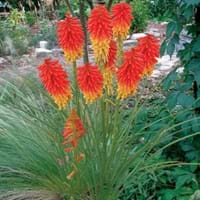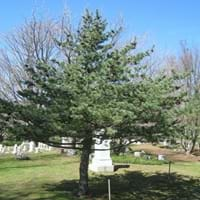Life Span
Perennial
Perennial
Type
Perennial
Needled or Scaled Evergreen
Origin
Hybrid origin
Japan
Types
Not Available
Not Available
Number of Varieties
Not Available
Habitat
Damp Places, Marshy ground
low mountains, Mountain Slopes, Mountain tops, Mountains
USDA Hardiness Zone
6-9
6-9
Sunset Zone
2a, 2b, 3a, 3b, 4, 5, 6, 7, 8, 9, 14, 15, 16, 17, 18, 19, 20, 21, 22, 23, 24
2a, 2b, 3a, 3b, 4, 5, 6, 7, 8, 9, 14, 15, 16, 17, 18, 19, 20, 21, 22, 23, 24
Habit
Clump-Forming
Spreading
Flower Color
Yellow, Red, Orange, Pink
Non Flowering Plant
Flower Color Modifier
Bicolor
Bicolor
Fruit Color
Not Available
Brown, Tan
Leaf Color in Spring
Green, Blue Green
Green, Blue Green
Leaf Color in Summer
Green, Blue Green
Green, Blue Green
Leaf Color in Fall
Blue Green, Gray Green, Light Yellow
Green, Blue Green
Leaf Color in Winter
Light Green
Green, Blue Green
Leaf Shape
Linear
Subulate
Plant Season
Spring, Summer
Spring, Summer, Fall, Winter
Sunlight
Full Sun, Partial Sun
Full Sun, Partial Sun
Growth Rate
Medium
Medium
Type of Soil
Clay, Loam, Sand
Loam, Sand
The pH of Soil
Acidic, Neutral
Acidic, Neutral
Soil Drainage
Well drained
Well drained
Bloom Time
Early Summer, Summer
Fall, Spring, Summer
Tolerances
Drought
Drought
Where to Plant?
Container, Ground
Ground
How to Plant?
Divison, Seedlings
Seedlings
Plant Maintenance
Medium
Medium
Watering Requirements
Needs more water during establishment, Water Deeply, Water in morning to avoid prompting diseases, Water in the early morning hours
Do not water frequently, Needs less watering
In Summer
Lots of watering
Lots of watering
In Spring
Moderate
Moderate
In Winter
Average Water
Average Water
Soil pH
Acidic, Neutral
Acidic, Neutral
Soil Type
Clay, Loam, Sand
Loam, Sand
Soil Drainage Capacity
Well drained
Well drained
Sun Exposure
Full Sun, Partial Sun
Full Sun, Partial Sun
Pruning
Cut or pinch the stems, Remove damaged leaves, Remove dead branches, Remove dead leaves
Remove damaged leaves, Remove dead branches, Remove dead leaves
Fertilizers
All-Purpose Liquid Fertilizer, Apply N-P-K
All-Purpose Liquid Fertilizer, Apply N-P-K
Pests and Diseases
Onion thrips, Red blotch, Root rot
Blight, Mealybugs, Red blotch, Sawfly Larvae, Scale insects
Plant Tolerance
Drought, Moisture
Deer resistant, Drought, Rabbit
Flower Petal Number
Single
Single
Fragrant Bark/Stem
No
Yes
Foliage Texture
Coarse
Fine
Foliage Sheen
Matte
Not Available
Attracts
Snails
Sawfly, White Pine Weevil
Allergy
Not Available
Not Available
Aesthetic Uses
Borders, Cottage Garden, Ground Cover
Bonsai, Borders
Beauty Benefits
Not Available
Not Available
Environmental Uses
Air purification
Air purification
Medicinal Uses
Not Available
Cold, Cough, Diuretic, Vermifuge
Part of Plant Used
Not Available
Seeds
Other Uses
Not Available
Herbicide
Used As Indoor Plant
No
No
Used As Outdoor Plant
Yes
Yes
Garden Design
Container, Cutflower, Mixed Border, Rock Garden, Wall
Feature Plant, Shade Trees, Street Trees, Topiary, Bonsai, Espalier
Botanical Name
KNIPHOFIA 'Border Ballet'
PINUS parviflora
Common Name
Tritoma, Wisley Blue Spring Starflower, Wisley Blue Springstar
five-needle pine
Japanese five-needle pine
In Hindi
Tritoma
Japanese White Pine
In German
Tritoma
Japanische White Pine
In French
Tritoma
Pin blanc du Japon
In Spanish
tritoma
Pino blanco japonés
In Greek
tritoma
Ιαπωνικά White Pine
In Portuguese
Tritoma
Japanese White Pine
In Polish
Tritoma
Japoński White Pine
In Latin
Trytoma
Pine Italica
Phylum
Tracheophyta
Tracheophyta
Class
Magnoliopsida
Pinopsida
Order
Asparagales
Pinales
Family
Liliaceae
Pinaceae
Clade
Angiosperms, Monocots
Not Available
Tribe
Not Available
Not Available
Subfamily
Not Available
Not Available
Number of Species
Not Available
Season and Care of Tritoma and Japanese White Pine
Season and care of Tritoma and Japanese White Pine is important to know. While considering everything about Tritoma and Japanese White Pine Care, growing season is an essential factor. Tritoma season is Spring and Summer and Japanese White Pine season is Spring and Summer. The type of soil for Tritoma is Clay, Loam, Sand and for Japanese White Pine is Loam, Sand while the PH of soil for Tritoma is Acidic, Neutral and for Japanese White Pine is Acidic, Neutral.
Tritoma and Japanese White Pine Physical Information
Tritoma and Japanese White Pine physical information is very important for comparison. Tritoma height is 45.70 cm and width 50.80 cm whereas Japanese White Pine height is 910.00 cm and width 610.00 cm. The color specification of Tritoma and Japanese White Pine are as follows:
Tritoma flower color: Yellow, Red, Orange and Pink
Tritoma leaf color: Green and Blue Green
Japanese White Pine flower color: Non Flowering Plant
- Japanese White Pine leaf color: Green and Blue Green
Care of Tritoma and Japanese White Pine
Care of Tritoma and Japanese White Pine include pruning, fertilizers, watering etc. Tritoma pruning is done Cut or pinch the stems, Remove damaged leaves, Remove dead branches and Remove dead leaves and Japanese White Pine pruning is done Remove damaged leaves, Remove dead branches and Remove dead leaves. In summer Tritoma needs Lots of watering and in winter, it needs Average Water. Whereas, in summer Japanese White Pine needs Lots of watering and in winter, it needs Average Water.





